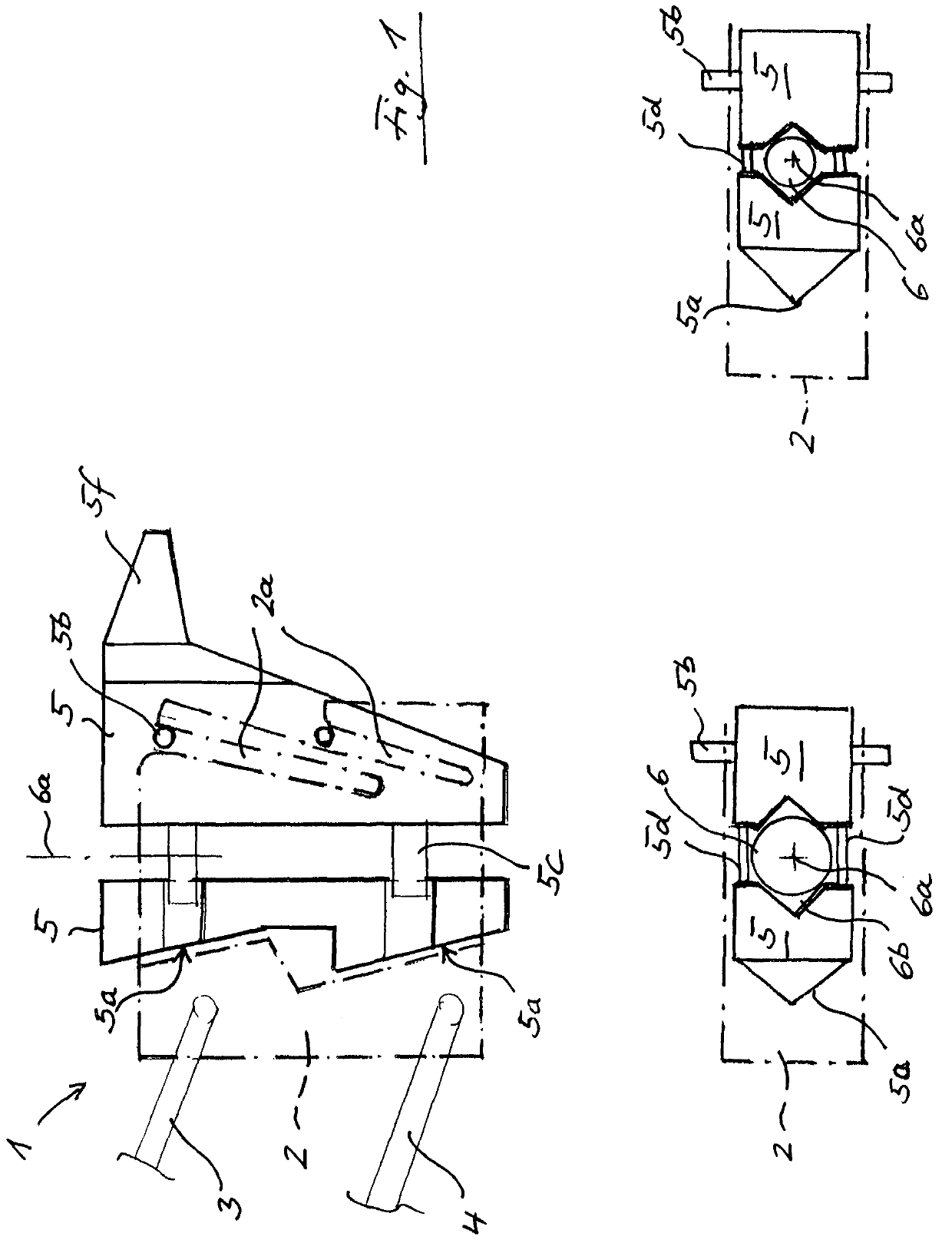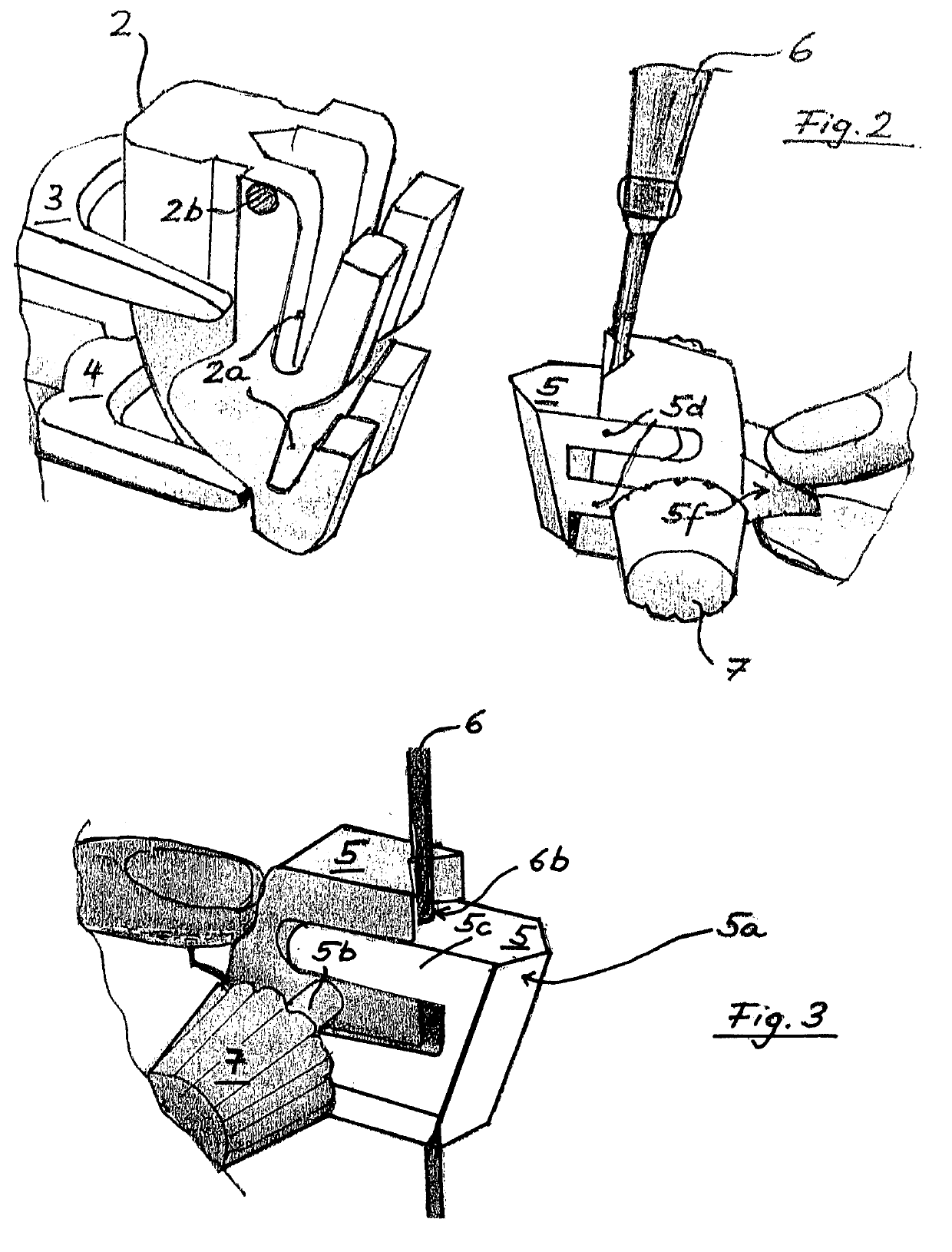Instrument guide
a technology of instruments and guides, applied in the field of instruments guides, can solve the problems of difficult change, reduced stereotactic accuracy, and relatively low accuracy of repeated operations, and achieve the effects of reducing radiation exposure of medical staff, convenient neurosurgery intervention, and reducing patient radiation exposur
- Summary
- Abstract
- Description
- Claims
- Application Information
AI Technical Summary
Benefits of technology
Problems solved by technology
Method used
Image
Examples
Embodiment Construction
[0014]An instrument guide 1 is shown with a bracket-like base body 2 in dashed lines. The base body 2 is preferably connected to a not-shown adjusting device via adjusting arms 3 and 4, which are preferably adjustable with two actuators in accordance with the above-discussed prior art. In this way, the instrument guide 1 is set in several degrees of freedom.
[0015]The main or base body 2 houses two opposite guide jaws 5 for accommodating a needle 6 as an example of a medical instrument. The left guide jaw 5 has two guide ways 5a that are mutually parallel inclined at an angle of approximately 15° to the central axis 6a of the needle 6. However, also only one guide way 5a might be sufficient (cf. FIGS. 2 and 3). The right guide jaw 5 has two pins 5b, which engage in corresponding guide slots 2a on the base body 2, wherein the slots 2a have the same inclination as the guide ways 5a, but in mirror image alignment to the middle plane that contains the central axis 6a. In this way, a sync...
PUM
 Login to View More
Login to View More Abstract
Description
Claims
Application Information
 Login to View More
Login to View More - R&D
- Intellectual Property
- Life Sciences
- Materials
- Tech Scout
- Unparalleled Data Quality
- Higher Quality Content
- 60% Fewer Hallucinations
Browse by: Latest US Patents, China's latest patents, Technical Efficacy Thesaurus, Application Domain, Technology Topic, Popular Technical Reports.
© 2025 PatSnap. All rights reserved.Legal|Privacy policy|Modern Slavery Act Transparency Statement|Sitemap|About US| Contact US: help@patsnap.com


